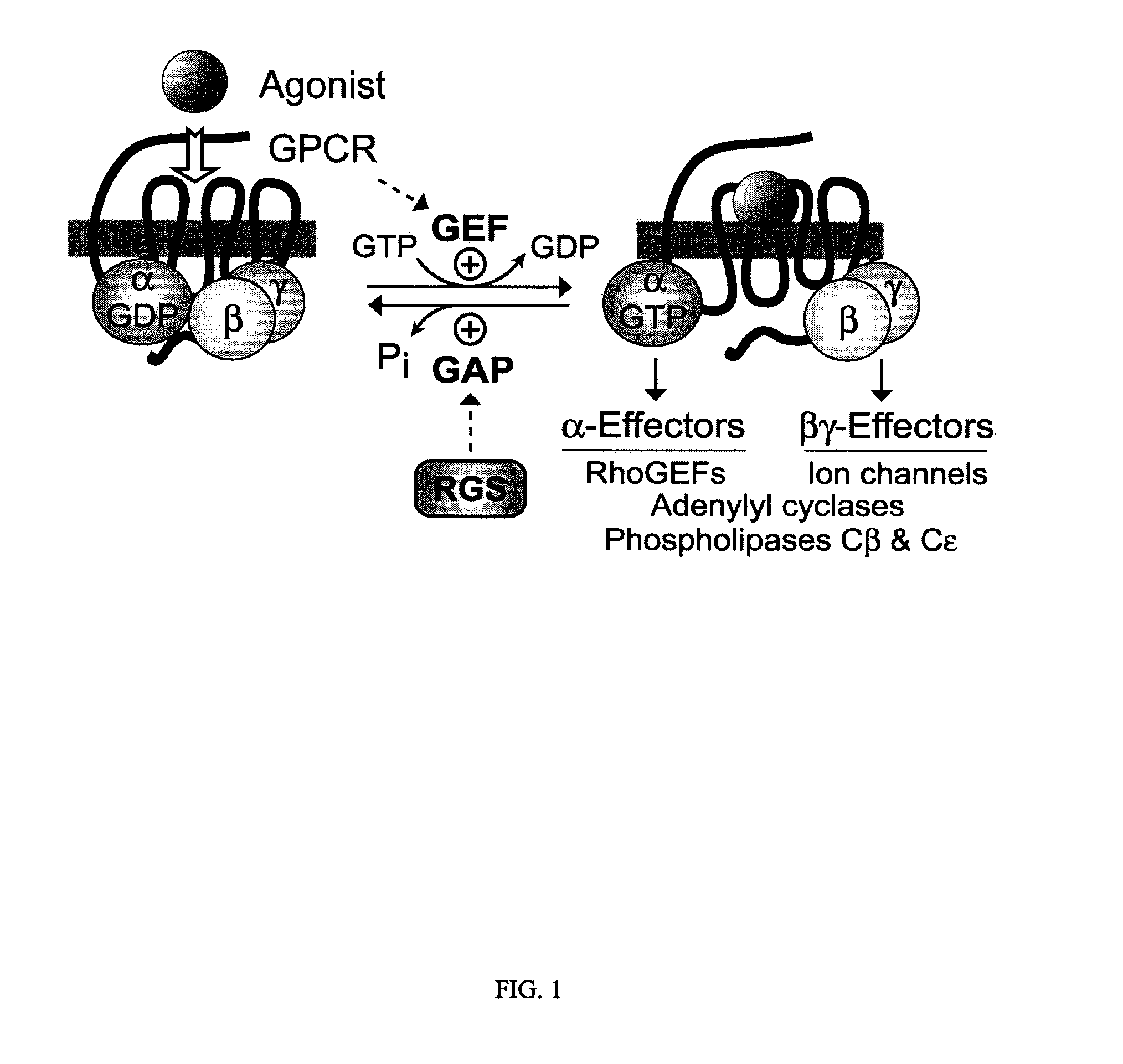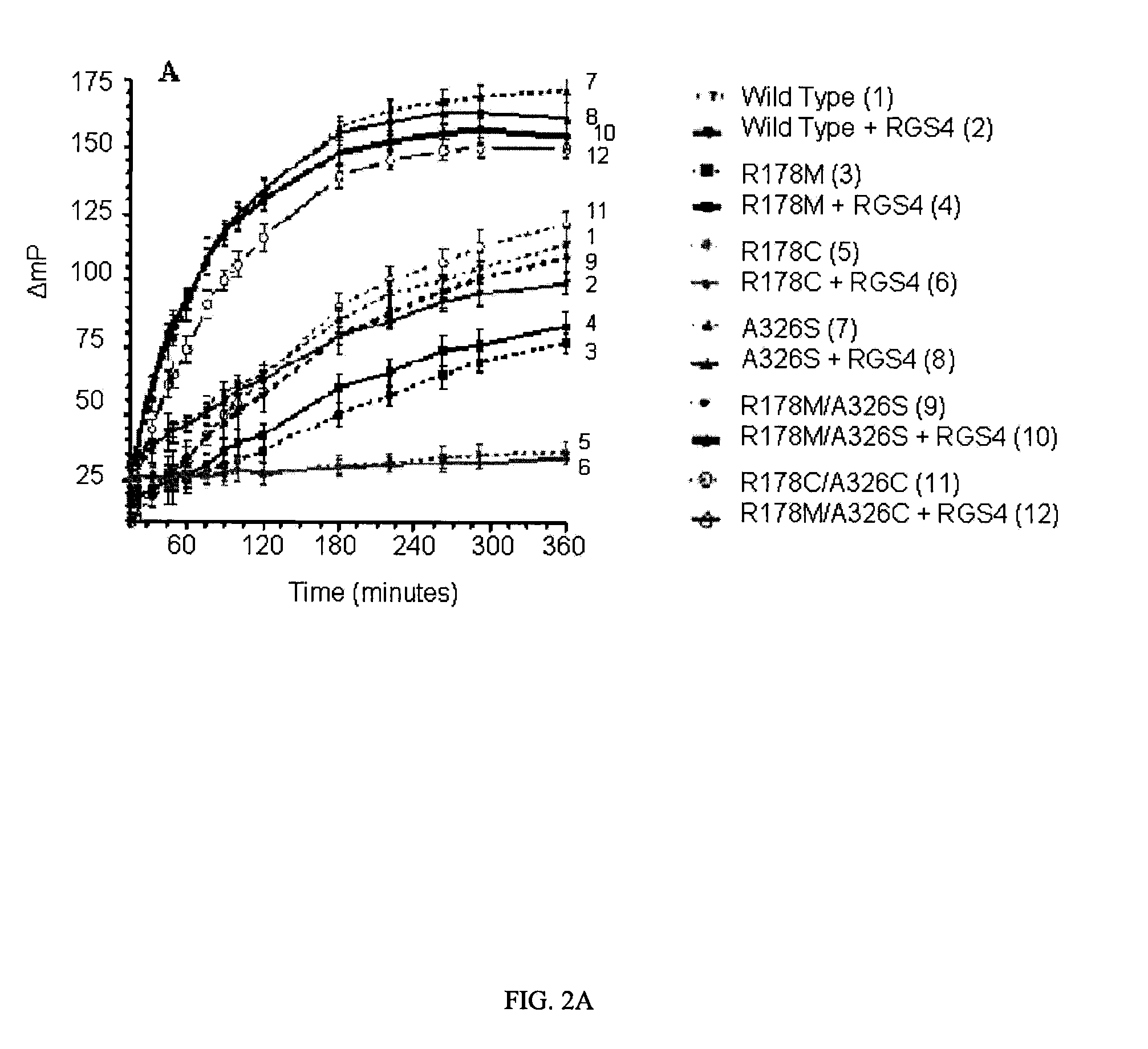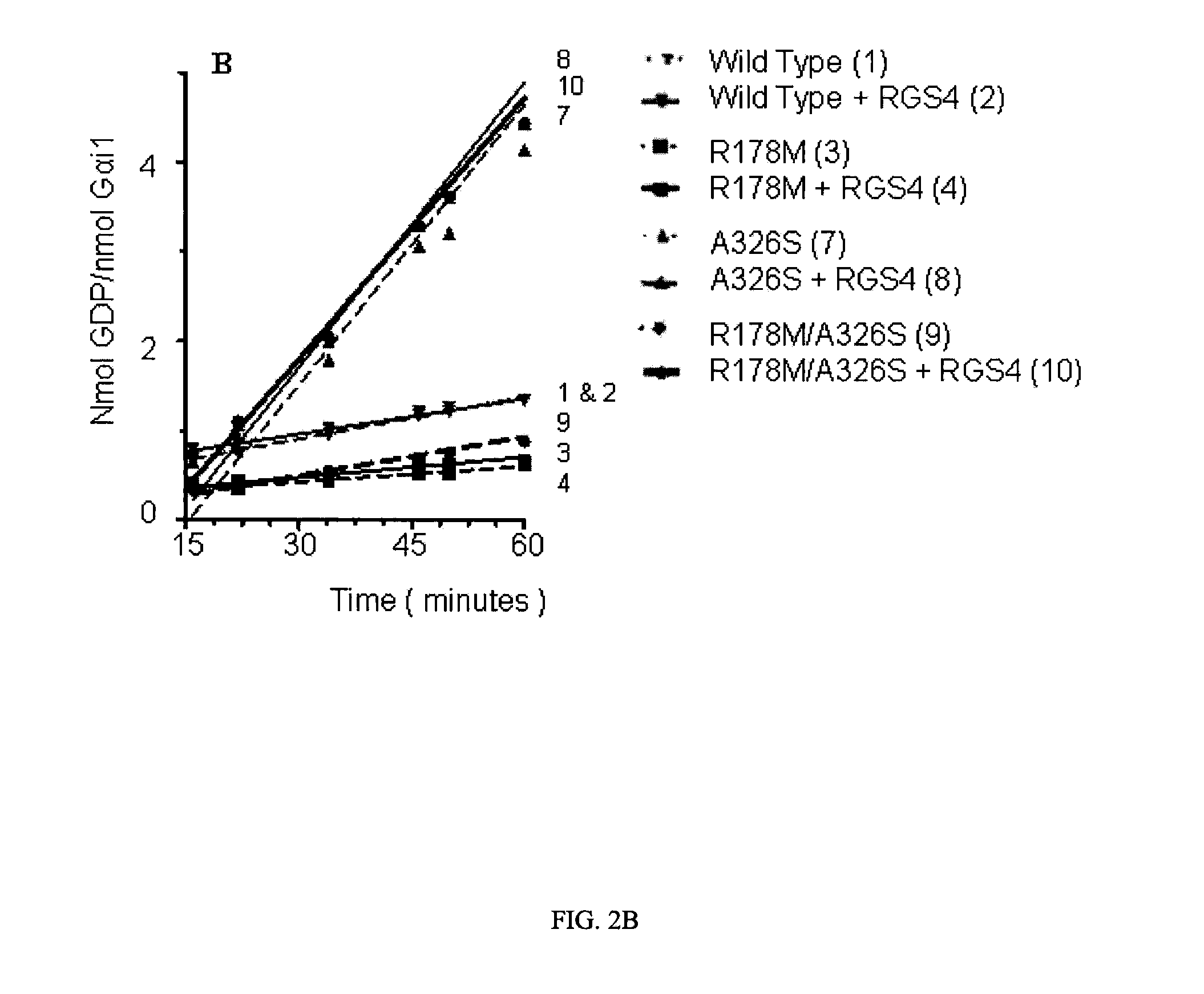Genetically engineered g-alpha proteins and uses thereof
a technology of gtpase and gene, applied in the field of gene engineered galpha proteins, can solve the problems of slow steady-state gtpase activity, inability to measure gap activity, and inability to screen compound libraries for inhibitors or activators of rgs proteins, etc., and achieve the effect of high g function
- Summary
- Abstract
- Description
- Claims
- Application Information
AI Technical Summary
Benefits of technology
Problems solved by technology
Method used
Image
Examples
example 1
Testing of the Novel Gαi1 Mutants for GDP Dissociation and GTP Hydrolysis Rates
[0061]The effect of RGS4 on GTP hydrolysis by WT and mutated Gαi1 proteins is illustrated in FIG. 2. In this experiment, Gαi1 proteins were incubated with and without RGS4 in the presence of GDP assay reagents, and plates were read at intervals starting at 15 minutes. The polarization data is shown in FIG. 2A, and in FIG. 2B a subset of the data in the linear region has been converted to GDP formation using a standard curve and normalized to the amount of Gαi1 protein present. FIG. 2A is complex, and the main observations to point out are as follows: a) The variants with mutations at the catalytic arginine only, R178C and R178M, had lower activity than wild type Gαi1 and, like wild type, were unaffected by RGS4. These results are expected because the observed GTPase rate is limited by the slow dissociation of GDP from enzyme following the hydrolysis reaction for all of these proteins. b) The A326S variant...
example 2
The Specific Combination of R178M and A326S Accelerates GDP Dissociation More than Expected
[0064]To gain an accurate understanding of how catalysis was affected in mutated Gαi1 proteins, classic radioassay methods were employed to directly measure GDP dissociation and GTP hydrolysis rates. Single turnover GTP hydrolysis assays, which are not rate-limited by GDP dissociation [Ross, E. M. Methods Enzymol, 2002. 344: p. 601-1], were used to measure the intrinsic kcat, and GTPγS binding assays were used to measure GDP dissociation. The single turnover assay measures 32Pi released from enzyme-bound γ-32P-GTP; reactions are terminated before a stoichiometric amount of phosphate is formed. Binding of the non-hydrolyzable GTP analog, GTPγ-35S, to Gαi1 which had been preloaded with GDP was used as a measure of the rate of GDP dissociation; the assumption is that kon for GTPγ-35S is much more rapid than koff for GDP.
[0065]The results from single turnover GTP hydrolysis assays indicated that, ...
example 3
The Gαi1 R178M / A326S Double Mutant is Specifically Recognized by RGS Proteins
[0068]A concern about the use of mutated Gα proteins for RGS GAP assays is that the mutations could disrupt the normal specificity that RGS proteins show for the various Gα substrates. To test for this possibility with Gαi1 R178M / A326S, inventors measured the GAP effects of three additional RGS domains on the R178M / A326S. Inventors used RGS2, which is not expected to have a functional interaction with wild type Gαi1 in vitro based on multiple previous studies [Heximer et al. J Biol Chem, 1999. 274(48): p. 34253-9; and Heximer et al. Proc Natl Acad Sci U S A, 1997. 94(26): p. 14389-93], and RGS21, the newest member of the R4 subfamily, which has been shown to bind Gαi1 [von Buchholtz et al. Eur J Neurosci, 2004. 19(6): p. 1535-44] and have a GAP effect on Gαi1 in single turnover radio assays. In addition, inventors included an RGS21 variant in which a conserved arginine (R126) at the interface of the complex...
PUM
| Property | Measurement | Unit |
|---|---|---|
| hydrolysis rate | aaaaa | aaaaa |
| Disorders | aaaaa | aaaaa |
| conformational | aaaaa | aaaaa |
Abstract
Description
Claims
Application Information
 Login to View More
Login to View More - R&D
- Intellectual Property
- Life Sciences
- Materials
- Tech Scout
- Unparalleled Data Quality
- Higher Quality Content
- 60% Fewer Hallucinations
Browse by: Latest US Patents, China's latest patents, Technical Efficacy Thesaurus, Application Domain, Technology Topic, Popular Technical Reports.
© 2025 PatSnap. All rights reserved.Legal|Privacy policy|Modern Slavery Act Transparency Statement|Sitemap|About US| Contact US: help@patsnap.com



